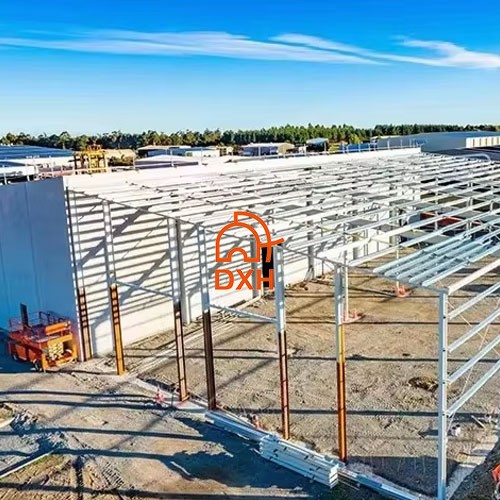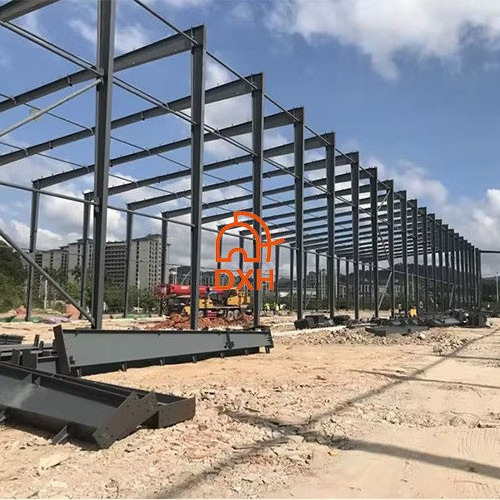This case study outlines the construction of the steel factory in the United Arab Emirates (UAE) for the DXH House manufacturing company. The project aims to expand the company's production capacity and modernize its operations to meet the increasing regional demand for high-quality steel products.

Strategically situated in the UAE, the factory is ideally positioned to serve markets across the Middle East and beyond. The UAE's world-class ports and transportation networks facilitate the convenient export of steel products to global markets. Furthermore, the factory's location within an industrial zone provides access to essential facilities such as electricity and water, as well as proximity to raw material suppliers, which helps reduce operating costs and improve efficiency.
The steel factory is designed to store a diverse range of steel products, including structural steel beams, rods, and plates. These products will cater to the needs of various industries, including construction, automotive, and infrastructure development.
The construction of the plant involved multiple phases to ensure efficiency and adherence to safety standards. The initial phase focused on site preparation, including land clearing, leveling, and laying the foundation. Following this, a sturdy steel frame, forming the plant's skeleton structure, was erected using high-grade steel beams and columns. This structure is designed to support heavy machinery and withstand the region's harsh environmental conditions, such as high temperatures and sandstorms. The images show the ongoing assembly of the plant's skeleton, with vertical columns and horizontal beams forming the main support system. The use of a modular construction method is evident in the construction of other parts of the factory near the main structure.

Few problems were faced during the whole project, one of these being the climatic extremes and the other, the rapid completion needed to meet market demand. To meet environmental challenges, the most modern materials and techniques were used for the maximization of the structure`s endurance. For example, the steel was painted with a protective coating to prevent corrosion when exposed to moisture and fine sand. Prefabricated steel also helped speed up the construction period with quick assembly on site.
The completion of the Emirates Steel Factory is set to play a significant role in the local economy. The factory will create numerous job opportunities at various skill levels, contributing to regional job growth. Moreover, it will reduce imports of steel into the UAE, making the country more self-sufficient and fostering downstream industries that use steel. Thus, by producing steel on a local level, the factory links with the UAE's vision of becoming a global hub in industrial innovation and manufacturing.
The UAE's steel factory construction project underscores the region's commitment to expanding its industrial footprint. With a strong emphasis on quality, efficiency, and sustainability, the factory is anticipated to become a key player in the global steel industry. The construction site images reflect the project's scale and complexity, highlighting the progress of the steel framework that will serve as the foundation for this modern industrial facility.
Our hours
Monday to Sunday: 9 AM - 6 PM
(all hours are Eastern Time)